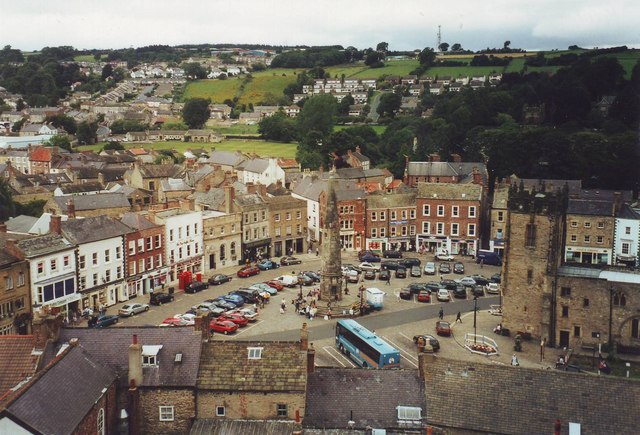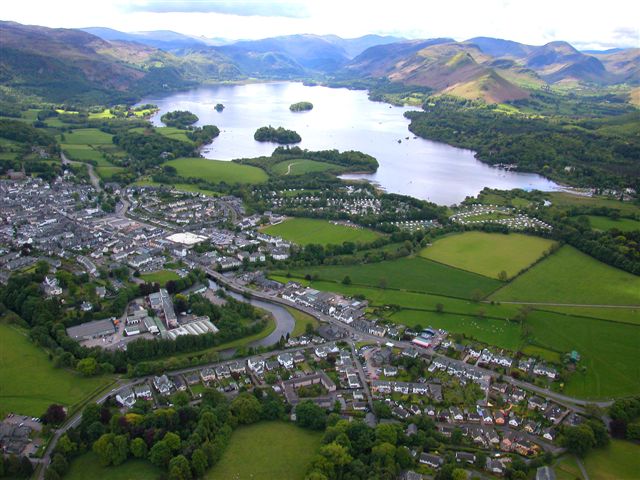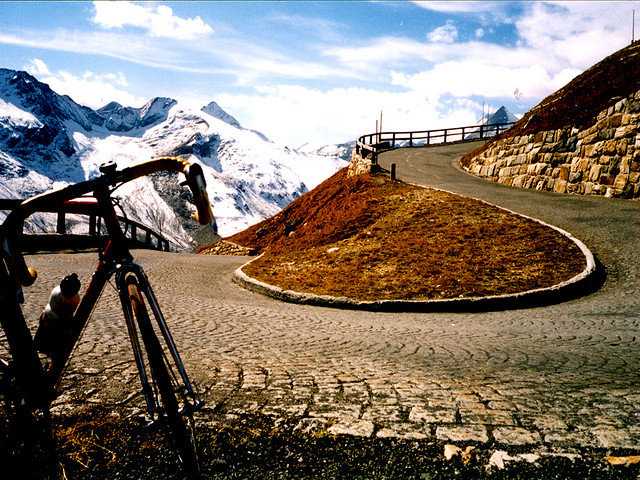Stage 6: York - Whitby, 166km
Climbs:
Sutton Bank (cat.1) 1,3km @ 12,7%
Rievaulx Bank (cat.2) 1,0km @ 9,3%
Blakey Bank (cat.1) 2,1km @ 11,9%
Rosedale Chimney Bank (1st Passage)(cat.1) 1,5km @ 11,9%
Rosedale Chimney Bank (2nd Passage)(cat.1) 1,5km @ 11,9%
Heygate Bank (cat.2) 1,6km @ 9,6%
Egton Cliff/Egton Bridge Cow Bank (cat.2) 1,3km @ 9,6%
After the hell that was the Bradford stage, I go easy on the riders today; the stage is 30km shorter and has less than half the number of categorised climbs - and all of them are on tarmac, no less! That doesn't mean that the riders will especially thank me of course, as yesterday will have really taken a lot out of them, and today is still a very difficult stage that will cause a lot of the rouleurs to get found out, and hopefully some of the puncheurs that lost a bunch of time on the cobbles will see an opportunity to make some time back and make this one fun from distance too - as whereas yesterday's race could have become exciting from attrition alone, that is in play today, but not as much as a standalone stage as yesterday; some of today's climbs after yesterday's efforts will really grind down the riders though. And while yesterday was all about
hellingen, today is all about
côtes.
As you may know, my generosity and kindness knows few bounds, and as a result, the riders get a first hour that is mostly relaxed, with nearly 50km of comfortable flat riding before the climbs begin. But when they come, they announce themselves quite suddenly with the emergence of the North York Moors coming as a sudden and violent change of scenery from the flatness of the early stage. The first climb is
Sutton Bank, a famous hill in these parts and one of Britain's best-known climbs, which gets up to
some fearsome gradients on its short but very sharp ascent. Although this is a major road, it is a very nasty climb and as one of the few climbs in the area with a car park and visitor centre at the top, I can imagine we will see a summit finish here in the ToB or the new Yorkshire race at some point.
After Sutton Bank we leave the big road alone, and turn off onto the narrow country lanes that will make up the bulk of today's racing, which will also make it harder to control. Soon we pass the wonderfully preserved
Rievaulx Abbey, precursor to
Rievaulx Bank (that sign is at the top, btw), our second categorised climb; a little shorter and not as steep, it gets a 2nd category rating, but it's still a nice short, sharp shock and a puncheur's special. After descending this we rejoin the main road at Helmsley until Kirkbymoorside, then a bit of gradual up-and-down on narrow roads north of the latter leads us into the important body of the stage. This starts just after the halfway point in the stage, with the ascent of the
challenging Blakey Bank, with multiple gradients over 15% and a max of 20%. It's a
scenic one, too, as
you can see. The signage also
warns us. There's actually a bit of climbing that follows the summit of this climb as we head up into the Moors, but this is much easier than the body of the climb and isn't included in the categorised climbing. There's about 10k between the actual end of climbing and the start of the next one... and it's a pretty serious one.
Although it is not as long as Blakey Bank and has the same average gradient,
Rosedale Chimney Bank has really grown to become one of the most well-known British climbs, often suggested by fans for inclusion in the hope of making a truly vicious Tour of Britain. The signs
warn of the suffering, and although the 33% noted on the sign may be a slight exaggeration (Brentacol gives a barely-more-than-false-flat
29,8% as the maximum), this one is still
unrelenting torment- only the first 100m and the last 150m are under a leg-breaking 12% gradient! Therefore, though the climb itself is short and tops out with all of 63km remaining, many riders distanced will need all of the 16km of descent and rolling terrain that follows the climb just to make contact with the leaders again.
Unfortunately for them, if they've done all that work to get back, I have some bad news in store for them: the next climb is a second ascent of Rosedale Chimney Bank. At least the
views are nice while their legs are screaming at them. Again, there is a 16km break of respite here as, perhaps luckily for the less blessed climbers, Rosedale Chimney Bank comes up the side of a steep, er, bank, but there are few climbs it can be immediately connected to. And so we crest it for the second time with 45km remaining (there's 16k or so on the circuit plus the 1,5km of the climb) and repeat ourselves, returning to the village of Rosedale exactly as we did before ascending the Bank for the second time. Only this time, at the crossroads where we turned left onto Rosedale Chimney Bank a few kilometres earlier, this time we turn right, which leads us up our next climb, Heygate Bank. This is a much easier affair, slightly longer than its neighbour but with an easier average gradient of 9,6%, and a maximum of
a mere and barely considerable 25%. Towards the summit it becomes
more exposed as well, and it's more straight and relentless than RCB as well, although overall a bit easier. However, topping out with 25km remaining I can anticipate it seeing a bit more action caused by aggression and not just from attrition, and it does give scope for this.
After the summit there is a downhill followed by a secondary, uncategorised climb; there is then a bit of flat atop the hillside before a very steep and technical descent leads us into the final climb of the day, the categorised part of which finishes with 12km remaining.
Egton Cliff, also known as Cow Bank, wears its steepest gradients (once more over 20%) near the bottom, however it is a bit shorter than Heygate Bank at the same average gradient, so could be argued to be a bit easier. It starts on a
scenic riverside before turning up the heat with gradients hitting 22%. After the GPM at 12km to go, there are another couple of uphill kilometres of false flat before a very fast and very straight, non-technical descent on major roads into Whitby, a coastal town most famous for its clifftop abbey, where 19th Century writer Bram Stoker went to create arguably the most enduring horror villain of all time, Dracula. The fabled abbey sits on the East Cliff, however, whereas the stage will finish on the West Cliff, which means
a couple of uphill corners inside the final kilometre before a straight, flat final 300m. I don't anticipate there will be a big bunch together here, but if there are groups together, the final kilometre will offer a couple of platforms for attack; it's a bit more like an easier version of the Tropea finish from the 2011 Giro.
York:
Whitby:






































